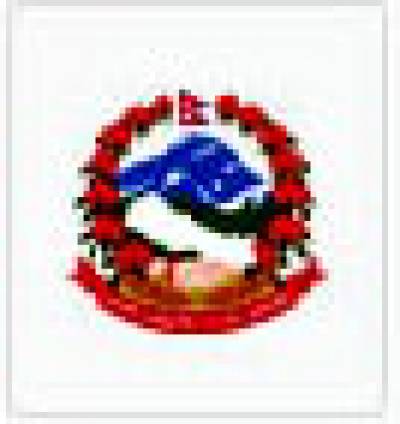MERA PEAK CLIMBING 7 DAYS
It is Nepal’s most popular trekking peak with its altitude of 6,476 meters. This 7-day Mera Peak climbing trip is a tough and intense reward for people who want to make it to the top of the Himalayas with stunning vistas of some of the biggest mountains in the world. The adventure starts by flying to Lukla, the gateway to the Everest region, and hopping on a helicopter to Kothe for a head start by saving time and physical exertion for what’s to come.
When you get to Kothe is really when the story kicks into high gear. The trail to Thangnak from Kothe winds its way through rhododendron forests, alpine meadows, and offers panoramics of the spectacular peaks that rise above the valley. From Thangnak, you'll continue the climb the following day to Khare, a minuscule village that functions as the staging point for the ultimate crawl to the top of Mera Peak. You travel further up the mountains along rocky paths and past glaciers.
You’ll acclimate to the altitude for a day, once you reach Khare. This is essential to your hike, because it allows your body to get used to the thinning air, making altitude sickness less probable. You will also receive an instructions about how to use mountaineering equipment like crampons and an ice axe, to ensure you will be ready for your summit bid.
The ascent to Mera High Camp is a gradual climb on snow and glacier before reaching camp, where it all becomes ‘real’ in anticipation of the following day. Climbing Mount Kenya as a team, setting off at 3; 00 a.m. for the summit, which is a tough 4-hour climb up through snow and ice to the summit of Point Lenana, from where the sun rise has panoramic views. At Mera Peak’s summit, you get a breathtaking panoramic view of the Himalayas, including the giants of Everest, Lhotse, Makalu, and Cho Oyu.
You’ll descend to Khare after summiting, and this Himalayan trek is concluded by flying back to Kathmandu. It’s a flight back to reality after an epic Himalayan journey.
ITINERARY
Day 1 : Fly from Kathmandu to Lukla (2,800m) & Helicopter to Kothe (3,580m) – Duration: Approx. 2 Hours.
Your Mera Peak adventure begins with a scenic flight from Kathmandu to Lukla, a short yet thrilling 30-minute flight that offers stunning views of the Himalayas. Once you arrive in Lukla (2,860m), you’ll board a helicopter that will take you to Kothe (3,580m), saving time on trekking. The helicopter ride provides breathtaking aerial views of the lush valleys and surrounding snow-capped peaks. Upon arrival at Kothe, you will settle in at a local teahouse, relax, and prepare for the journey ahead.
Day 2 : Trek from Kothe to Thangnak (4,350m) – Duration: 4–5 Hours.
After a warm breakfast, your trek begins with a gradual ascent through dense forests and along the Hinku River. As you make your way along the trail, you’ll pass through alpine meadows, enjoying the fresh mountain air and the beauty of the surrounding landscape. After 4 to 5 hours of trekking, you will reach Thangnak (4,350m), a small village at the foot of towering peaks. The stunning surroundings offer an ideal spot to rest and get accustomed to the increasing altitude.
Day 3 : Trek from Thangnak to Khare (5,045m) – Duration: 3 Hours.
On Day 3, the trek takes you higher into the mountains. The trail gradually ascends through rocky terrain and glacial moraines as you make your way towards Khare (5,045m), the base camp for Mera Peak. The path is increasingly challenging, and you will begin to feel the effects of the higher altitude. After about 3 hours of trekking, you will reach Khare, where you can enjoy panoramic views of the surrounding peaks and glaciers. This evening is a great opportunity to rest and prepare for the summit push in the coming days.
Day 4 : Acclimatization Day at Khare.
Acclimatization is key to a successful summit at high altitudes, and Day 4 is dedicated to giving your body time to adjust. You’ll spend the day in Khare, resting, hydrating, and doing a short hike to nearby viewpoints or ridges. This helps your body adjust to the thinning air and reduces the risk of altitude sickness. You’ll also have a briefing and training session from your guide on how to use mountaineering gear such as crampons, ice axes, and ropes. This day ensures you are fully prepared for the climb ahead.
Day 5 : Trek to Mera High Camp (5,700m) – Duration: 4–6 Hours.
Today’s trek is a steady climb through rocky and icy terrain, taking you to Mera High Camp (5,700m). This challenging trek, lasting 4 to 6 hours, will take you across glacial moraines and up steep sections where you will feel the effects of the altitude more significantly. As you ascend, the views of the surrounding peaks become more dramatic. Upon reaching High Camp, you'll settle into a tented camp and prepare for the final push to the summit the following day. Rest is crucial, as you’ll be starting the summit climb early the next morning.
Day 6 : Summit Mera Peak (6,476m) & Return to Khare – Duration: 8–9 Hours.
The summit day is the most challenging and rewarding part of the trip. You’ll begin the climb to Mera Peak (6,476m) early in the morning, around 2-3 AM, to reach the top by sunrise. The climb involves traversing snow-covered slopes, steep sections, and possibly some sections where fixed ropes are used. After a strenuous 5-7 hours of climbing, you will finally reach the summit of Mera Peak, where you’ll be treated to magnificent panoramic views of Mount Everest, Makalu, Lhotse, and other towering Himalayan peaks. After taking in the stunning views and celebrating the accomplishment, you will descend back to Khare, where you can rest and recover from the long, exhausting day.
Day 7 : Trek to Kothe, Helicopter to Lukla & Flight to Kathmandu – Duration: 6–7 Hours.
On the final day of your journey, you will trek back to Kothe from Khare, passing through familiar landscapes and enjoying the stunning views of the mountains one last time. The trek takes around 4-5 hours, allowing time for a leisurely pace. Once you reach Kothe, you will board a helicopter for the flight back to Lukla. After a brief stop in Lukla, you’ll catch a flight back to Kathmandu, where your Mera Peak climbing adventure will end. You’ll arrive in the bustling city, filled with memories of your incredible Himalayan climb.
SERVICES
Costs Included in Your Package
- Domestic Airport Pick-Up and Drop-Off: Private car or jeep transfer from/to the airport for your convenience and comfort.
- Meals During the Trek: Three nutritious meals per day (breakfast, lunch, and dinner), including fresh fruit served each evening after dinner.
- Scenic Helicopter Transfer: Shared helicopter flight from Lukla to Kothe -Lukla, offering a spectacular aerial view of the Himalayas.
- Accommodation: Comfortable trekking lodge (tea house) stays during the trek, and tented camp accommodation during the Mera Peak climbing session.
- Permits and Entry Fees: All necessary paperwork, including the Makalu National Park Entry Permit fees.
- Flights and Transfers: Round-trip domestic flights (Kathmandu–Lukla–Kathmandu via Ramechhap) with private airport transfers and applicable airport taxes.
- Experienced Trekking and Climbing Guide: An English-speaking, government-licensed guide who is friendly, knowledgeable, well-trained, and fully insured—covering all his expenses, including salary, food, accommodation, transport, and insurance.
- Mera Peak Climbing Permit: Official permit for climbing Mera Peak.
- Sherpa Porters: Reliable, helpful Sherpa porters (one for every two trekkers) equipped with proper safety and walking gear. Their salary, meals, accommodation, and insurance are covered.
- Medical Support: A Comprehensive first aid kit is available throughout the trek for your safety and peace of mind.
- Emergency Helicopter Arrangement: Coordination of emergency helicopter evacuation (covered by your personal travel insurance, if required).
- Essential Trekking Gear (On Loan): Complimentary use of sleeping bag, down jacket, duffel bag, and walking poles (to be returned after the trek).
- Exclusive Souvenirs: Sherpa Expedition & Trekking T-shirt and a trip achievement certificate upon successful trip completion.
- Health Monitoring: Daily use of an oxygen meter to monitor your pulse, oxygen saturation, and heart rate—crucial for detecting early signs of Altitude Mountain Sickness (AMS).
- Assistant Guide: An additional assistant guide will be provided for groups of 8 or more trekkers to ensure safety and personalized attention.
- Government Fees and Taxes: All government taxes and official expenses are included.
Costs Excluded from Your Package
- Meals in Kathmandu: Lunch and dinner while staying in Kathmandu are not included.
- Hotel Accommodation in Kathmandu: Accommodation in Kathmandu before or after the trek is not covered.
- Nepal Entry Visa: The Nepal visa fee is not included. Visas are available on arrival at Tribhuvan International Airport:
- $30 USD for 15 days
- $50 USD for 30 days
- $125 USD for 90 days
- Travel & Medical Insurance: Personal travel and medical insurance (mandatory for trekking and climbing).
- International Airfare: Flights to and from Nepal are not included.
- Personal Expenses: Any personal spending such as souvenirs, laundry, and snacks.
- Drinks & Snacks During the Trek: Alcoholic and non-alcoholic beverages (including tea, coffee, soup, hot chocolate, cocoa, bottled water), as well as any extra food items purchased along the way or at tea houses (e.g., additional meals, snacks, desserts like chocolate, cake, pudding, etc.).
- Extras at Tea Houses: Charges for hot showers, Wi-Fi, and battery charging at trekking lodges are not included.
- Tips: Gratuities for guides, porters, and drivers (tipping is customary and appreciated).
- Excess Baggage Fees: Extra baggage over 10 kg on the Lukla flight may incur additional fees.
- Early Return from Trek: In case of an early return due to illness or any unforeseen reason, the cost of unused services (flights, accommodations, meals, etc.) is non-refundable. Any additional expenses in Kathmandu (hotel, meals, etc.) will be your responsibility.
EQUIPMENTS
You’ll carry your personal gear and share some group equipment, so pack light with layered, weather-appropriate clothing—avoid cotton and choose breathable, insulating fabrics. A windproof duffle (provided and carried by porters) and water are included. Non-trekking items can be stored in Kathmandu. Sherpa Expedition & Trekking supplies all essential expedition gear.
Upper Body:
- Base Layers: Moisture-wicking and quick-drying shirts and thermal tops.
- Insulation Layers: Fleece or down jackets to provide warmth.
- Waterproof Shell Jacket: A durable and breathable jacket to protect against wind and rain.
- Softshell Jacket: A lightweight and water-resistant jacket for added protection.
- Climbing Harness: A comfortable harness to secure yourself to the rope.
- Helmet: A strong and well-fitting helmet to protect your head from falling objects.
- Gloves: A combination of lightweight liner gloves and insulated gloves or mittens for warmth and dexterity.
- Buff or Neck Gaiter: To protect your neck and face from cold and wind.
- Sunglasses: Polarized and UV-protected sunglasses to shield your eyes from the sun and snow glare.
- Goggles: Ski or mountaineering goggles for added eye protection in extreme weather conditions.
Lower Body:
- Base Layers: Moisture-wicking and quick-drying thermal bottoms.
- Insulation Layers: Fleece or insulated pants for added warmth.
- Waterproof Shell Pants: Durable and breathable pants to protect against wind, rain, and snow.
- Softshell Pants: Lightweight and water-resistant pants for added protection.
- Mountaineering Boots: Sturdy and insulated boots designed for snow and ice.
- Crampons: Attachable spikes that provide traction on icy terrain.
- Gaiters: Waterproof and breathable gaiters to keep snow out of your boots.
- Socks: A combination of moisture-wicking liner socks and thick, warm mountaineering socks.
Other Essential Items:
- Backpack: A spacious and sturdy backpack to carry your climbing gear and personal belongings.
- Sleeping Bag: A warm and lightweight sleeping bag that can withstand sub-zero temperatures.
- Trekking Poles: Adjustable trekking poles for added stability and support.
- Headlamp: Essential for climbing in low-light or dark conditions.
- Water Bottles: Insulated water bottles to keep your water from freezing.
- Sunscreen: High SPF sunscreen to protect your skin from the strong sun at high altitudes.
- First Aid Kit: A comprehensive first aid kit with essential medications and supplies.
- Climbing Snacks: Energy bars, nuts, and other lightweight snacks for quick fuel during the climb.
It is important to invest in high-quality gear and ensure that everything fits properly and is in good condition. Additionally, consult with experienced climbers or a professional guide to ensure you have all the necessary gear and receive proper training on how to use it effectively and safely.
Note: Essential climbing equipment, including an ice axe, crampons, climbing boots, harness, helmet, safety rope, ascender (jumar), and carabiner, can be hired in Khare. The total cost is approximately USD 120 per person for a complete set.
GOOD TO KNOW
⛰️ Altitude Acclimatization is Critical
Climbing Mera Peak takes you above 6,000 meters, where the air is thinner and altitude sickness is a real concern. Acclimatization is crucial for a safe and successful climb. The itinerary includes dedicated rest days at Khare to allow your body time to adjust. It’s essential to hydrate well, eat properly, and take it easy during acclimatization to minimize risks associated with high altitude.
🧗 Basic Mountaineering Skills Are Beneficial
Although Mera Peak is considered a non-technical trekking peak, basic mountaineering knowledge can be very helpful. The ascent requires the use of crampons, ice axes, and ropes, especially on glacier sections. You don’t need to be an expert mountaineer, but understanding how to use these tools increases safety and confidence. A briefing and practice session will be provided by your guide at Khare before the summit attempt.
🚁 Helicopter Transfers Save Time
The 7-day itinerary uses helicopter transfers from Lukla to Kothe and back, significantly reducing trekking time. This allows you to focus more on the climb and acclimatization, giving you a more relaxed and efficient trip. The helicopter ride also provides an opportunity to witness the stunning landscape from the air, including views of Everest and the surrounding peaks.
🥶 Expect Cold and Variable Weather
Temperatures at Mera High Camp and the summit can drop below freezing at any time of year, especially during the early morning summit attempt. Be prepared for cold conditions with appropriate gear, including a down jacket, thermal layers, gloves, and a four-season sleeping bag. Even in peak trekking seasons, weather in the mountains can be unpredictable, so be ready for sudden changes.
🛂 Permits and Documentation Are Required
To climb Mera Peak, you’ll need a few essential permits. These include the Mera Peak Climbing Permit, the Makalu Barun National Park Permit, and a TIMS (Trekkers’ Information Management System) Card. These permits are usually arranged by the trekking agency, but it's important to ensure all necessary documentation is in place before beginning your journey.
🧳 Packing Light is Essential
Although the helicopter transfer allows for some flexibility, it’s still important to pack lightly. You’ll need to bring mountaineering gear, clothing for all weather conditions, personal items, and medications. Most trekking companies will provide necessary climbing equipment like ropes, harnesses, and tents. Keep your backpack to a minimum and ensure everything you bring is functional for the trek.
🍲 Meals and Accommodation
Expect simple but hearty meals at teahouses along the way, offering traditional Nepali dishes like dal bhat, momo, and rice. At Mera High Camp, you’ll camp in tents, so be prepared for basic yet comfortable accommodation. While the food at base camps may be limited, it’s nutritious, with an emphasis on carbohydrates to fuel your climb.
💼 Travel Insurance is Mandatory
It’s essential to have comprehensive travel insurance that covers high-altitude trekking, emergency evacuation, and medical treatment. Make sure your policy covers you for altitudes up to 6,500 meters, as well as potential accidents and health issues that could arise during your trek.
🧍♂️ Group Size and Support
Mera Peak climbs are typically conducted in small groups, with a range of 2 to 10 climbers. You’ll be led by an experienced guide and supported by porters. Smaller groups allow for a more personalized experience, ensuring you receive the attention and care needed for a successful ascent.
MAP
PHOTOS/Videos
Departures
Select a departure month
Fill out the form below and a Travel Expert will reach out to create your perfect tour.
FAQS
How difficult is Mera Peak climbing?
Mera Peak is considered a non-technical trekking peak, making it accessible for climbers with some trekking experience. However, it is still physically demanding due to the altitude and challenging terrain, including glaciers and snow. Basic mountaineering skills are helpful but not required.
Do I need prior climbing experience?
No prior climbing experience is necessary, but having a background in high-altitude trekking is beneficial. Basic mountaineering training (such as using crampons and ice axes) will be provided during the trek, especially before the summit attempt.
When is the best time to climb Mera Peak?
The best times to climb Mera Peak are during spring (March to May) and autumn (September to November). These seasons offer the clearest skies and most stable weather conditions, enhancing the experience and summit success rate.
What is the maximum altitude on this trek?
The highest point on the Mera Peak Climbing trek is the summit itself, at an altitude of 6,476 meters (21,192 feet). You will pass through several high-altitude areas, including Mera High Camp at 5,700 meters (18,696 feet).
How do we deal with altitude sickness?
Altitude sickness is a common concern at high elevations. This trek includes rest days for acclimatization, which significantly reduces the risk. It’s important to stay hydrated, avoid overexertion, and follow your guide's recommendations. If symptoms of altitude sickness appear, the guide will adjust the itinerary for safety.
Do I need any permits for this trek?
Yes, you will need several permits for the trek. These include a Mera Peak Climbing Permit, a Makalu Barun National Park Permit, and a TIMS Card. Your trekking agency will arrange these permits for you in advance.
What kind of food is available during the trek?
You’ll enjoy traditional Nepali meals such as dal bhat (lentil soup with rice), momo (dumplings), and pasta. At higher altitudes, meals are more basic but still nutritious, focusing on high-calorie foods to fuel your body. At Mera High Camp, food options may be limited, but you'll have enough to sustain your energy for the climb.
What should I pack for the trek?
You will need warm clothing (including thermal layers, a down jacket, gloves, and a hat), mountaineering boots, trekking poles, and sun protection. The climbing gear (like crampons, ice axes, and ropes) will generally be provided by the outfitter. Be sure to pack light, focusing on essentials for comfort and safety.
Why do we take helicopters for part of the trek?
Helicopter transfers are used to save time and reduce physical strain. You’ll take a helicopter from Lukla to Kothe and back, skipping long trekking days and focusing on the summit climb and acclimatization. The helicopter ride also provides spectacular aerial views of the Himalayas.
How many people are in a typical Mera Peak climbing group?
The group size typically ranges from 2 to 10 climbers, ensuring a personalized experience. Smaller groups mean more focused attention from the guide, making it easier to manage the climb and enjoy the journey.
Latest Traveller’s Reviews
Travel experiences of our clients who recently returned from their trips.
100%
Based On 1 Reviews
James Atkinson
Australia
Exceptional Leadership by Tensing and Sonam Sherpa
Our guide Tensing Sherpa was as good as they get—competent, attentive, considerate, fun, safe, and meticulous. Sidar Sonam was a super guy who took such good care of us. Sonam had been to the top of Everest five times—the most accomplished mountaineer I have ever met!
People Considering This Package Right Now Check availability
























